Celebrating the Birthday of Henri Matisse
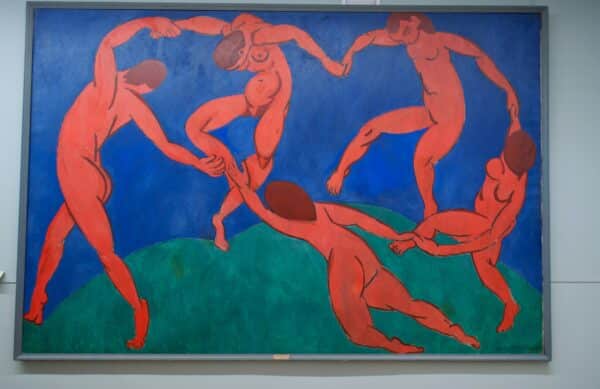
Henri Matisse, Dance, 1910, Image Attribution: David P. Flickr
As we enter the new year of 2024, we can also celebrate the birthday of French artist, printmaker and sculptor, Henri Matisse.
Born on 31st of December 1869 in Le Cateau-Cambresis in Northern France, Matisse is one of the best known and most influential artists in western Art History.
Henri Matisse, A Brief Biography
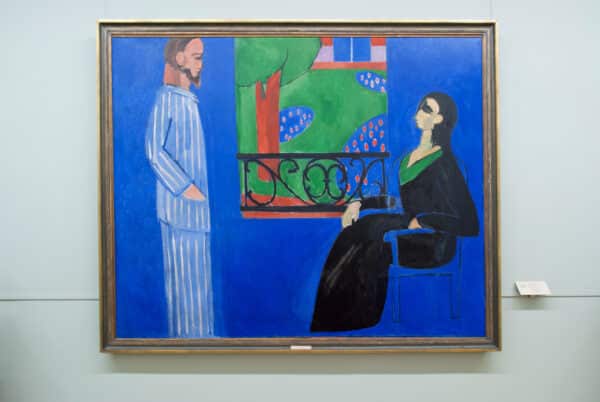
Henri Matisse, The Conversation, c. 1908 -1912, Oil on Canvas, Image Attribution: David P. Flickr
Henri Matisse didn’t become interested in art until his early twenties. Having originally trained as a lawyer, in 1891 his ambitions shifted and Matisse moved to Paris to study art via the traditional academic pathways on offer there.
Matisse first started exhibiting his artwork in 1895 and, initially, his work was clearly influenced by his academic education. Despite his original formal manner, Matisse turned out to be nothing if not experimental in his use and application of colour. Informed by the fantastic diversity of the Parisian art scene, he soaked up the array of movements that flowed through the gallery spaces of the city.
As well as the less avant-garde neo-classical and realist styles, Matisse took great inspiration from his early modern compatriots who came before him. Artists such as Manet and Cezanne, who were pioneers of the post-impressionist movement, helped give Matisse his not-so-academic and more spontaneous direction. He was also associated with Picasso, Derain, Seurat and many other modern artists who helped shape and influence his work.
Henri Matisse the Colourist
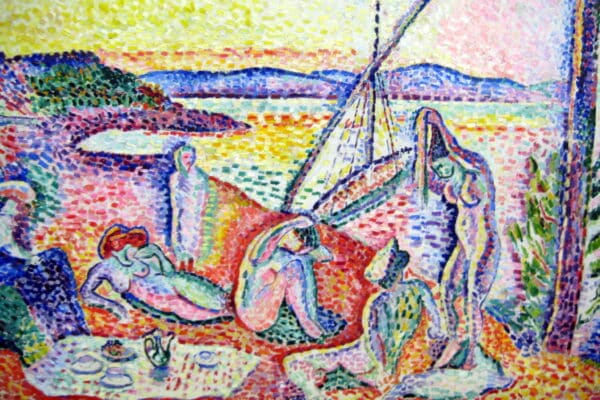
Henri Matisse, Detail: Luxe, calme et volupté, 1904-1905, Oil on Canvas, Image Attribution: W Gobetz Flikr
Besides his colleagues, one major influence on Matisse’s work was his discovery of the dazzling light of St Tropez. Which, at the time, was a small and sparsely populated fishing village on the French Riviera. On a trip to visit his friend and fellow painter Paul Signac there, Matisse encountered this unmatched light and moving forward his palette moving became even brighter and his work even more colour centric. For all of his career, Matisse valued colour exceptionally highly when it came to his painting.
As well as his experimental use of colour, Matisse’s brushwork technique and style changed identifiably and frequently throughout his lifetime. After his 1904 visit to St Tropez, one his most famous periods was his leadership of the Fauvist movement – famously translated to mean “wild beasts”, the style was labelled for the artist’s wild palettes, erratic brushwork and challengingly structured compositions.
After the Fauves, Matisse continued to move, adapt and experiment throughout his artistic career. After living in Nice he then travelled to America for a spell, all the while trying his hand at drawing, painting, sculpting, illustration, collage, printing and much more. During his lifetime Henri Matisse created some of the most iconic art pieces in modern art history and his influence is still very much felt today.
Henri Matisse’s Blue Nudes
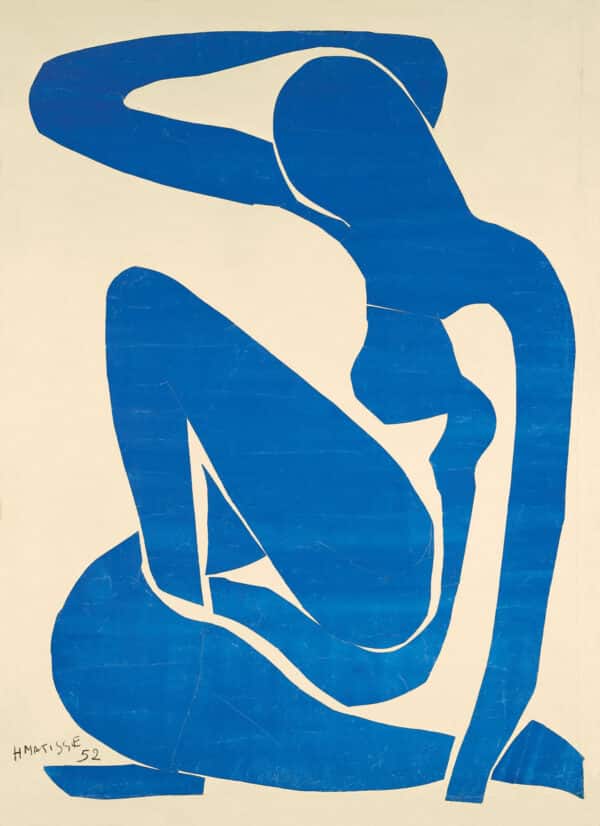
Henri Matisse, Nu Bleu II, 1952, Gouache on paper, cut and pasted on white paper, mounted on canvas, Image Attribution: Lluís Ribes Mateu Flikr
Not only was colour a focal part of Matisse’s work, but a popular subject matter that he frequently returned to was that of the female nude. One of the most well recognised collections of art pieces in modern history being Matisse’s series of paper cutouts entitled Blue Nudes.
This set of works are an excellent epitomisation of Henri Matisse’s career in general. Not only do they demonstrate his unrelenting use of bold colour. This, combined with the simplified impression of the female form, mean these cutouts are a true culmination of Matisse’s depictions of the female nude.
Created only two years before he died, the naked bodies are presented in a bright yet monochromatic blue palette. The white space behind the block of colour creates a sense of three dimensionality on a two dimensional plane. Matisse valued blue as a highly important colour and his impressionistic Blue Nudes are a perfect example of Matisse’s artistic process in which he describes himself as “directly cutting into colour”.
Matisse spent his final days in Nice and died at the age of 84 in 1954. Now, 154 years after his birth, Matisse might be fascinated to see how the art scene has evolved and how his own style has been so influential on the evolution of Modern Art. He would likely be amazed at his own legacy, and delighted too. Many artists in the intervening years have made significant contributions, yet Matisse remains one of the most prolific. Known best for his originality, as well as his bold, imaginative use of colour, shapes and feelings throughout his six decade career.
“A certain blue penetrates your soul” Henri Matisse
Here at Blue & White Company, we are great appreciators of the work of Henri Matisse and it feels a special way to draw this year to a close, reflecting on his life and achievements.
With Juliet having worked for many years at the Ruskin School of Art supporting students in their undergraduate art course, it was endlessly fascinating to see how students interpreted their life drawing classes. During several periods, life drawing was a core component of their first year of undergraduate studies and Francis Bacon, an artist who turned his back on traditional art schools, also worked from medical books to study the human form. Our life drawing gifts were inspired by this shared love of the joy of recreating the human form, experimental brushwork and colour, with artwork developed by artist Weimin He.
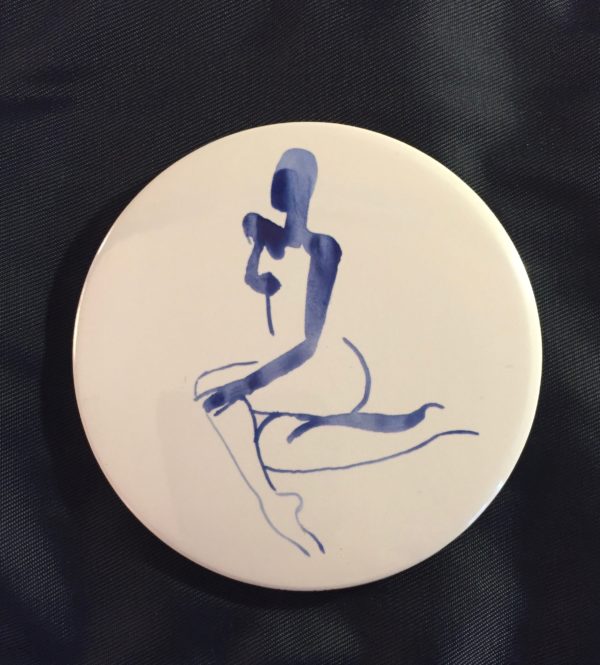
Pocket mirror with life drawing figure by artist Weimin He
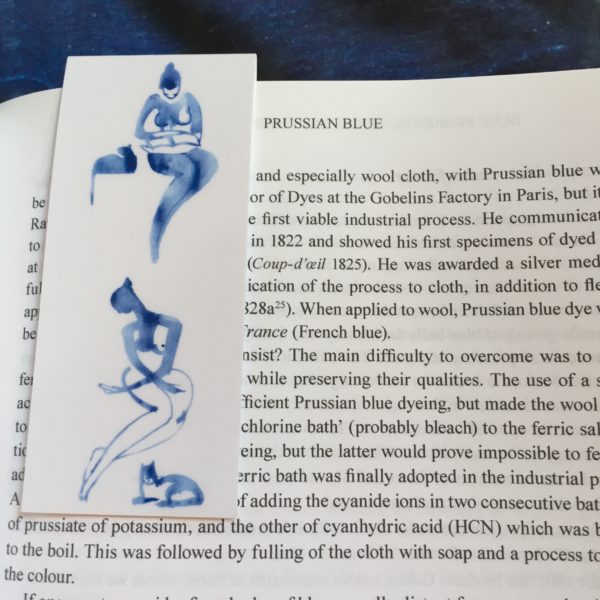
Life drawing magnetic bookmark with figures by artist Weimin He
“Drawing is the skeleton of what you do and colour is its flesh.” Nicolas Poussin
Happy Birthday to Henri Matisse and Happy New Year from Blue and White Company!